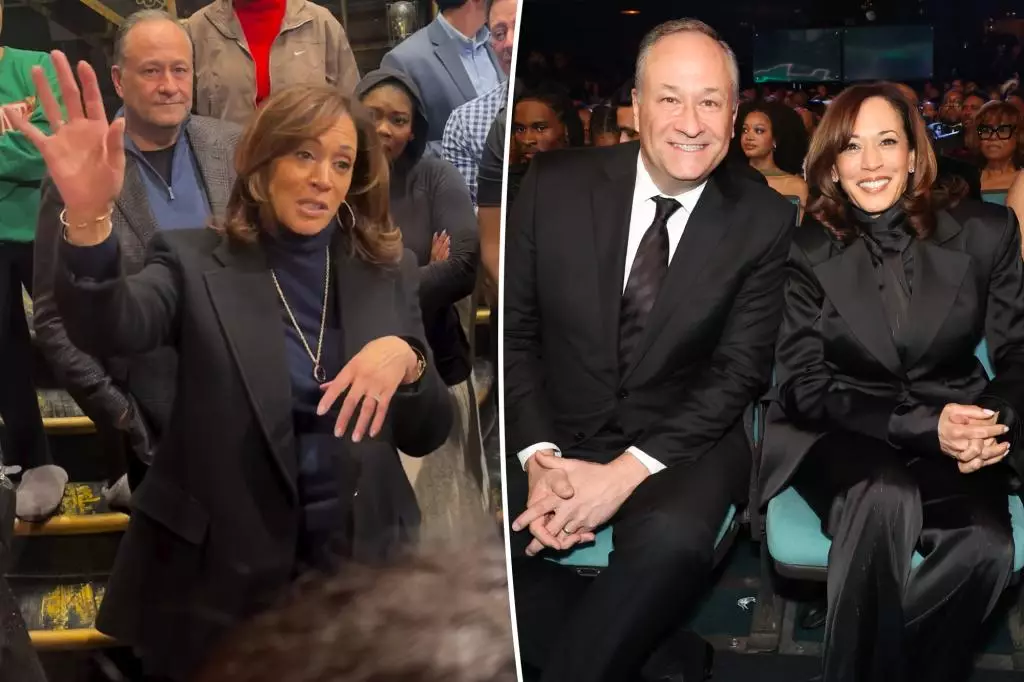In the tumultuous arena of American politics, the vice presidency often serves as a double-edged sword: a platform for influence and a breeding ground for scrutiny. Kamala Harris, once heralded as a beacon of change within the Democratic party, now finds herself amidst criticisms of minimal visibility and engagement. In the aftermath of an election loss to Donald Trump, insiders have likened her to a game of “Where’s Waldo?”—perceived as missing in action during a critical time for the party. While supporters may argue she is working discreetly behind the scenes, the public perception hints at a leader struggling to assert her influence where it is needed most.
The Perception of Inaction
Recent comments from Democratic insiders display a troubling sentiment: a belief that Harris is failing to embody the leadership required in today’s political climate. As one anonymous source lamented, her approach appears to be one of avoidance rather than engagement. With the U.S. facing several pressing issues—from economic instability to social justice concerns—this kind of “do-nothing” strategy is increasingly viewed as a failure to fulfill her role as vice president. Critics question whether Harris’s current public life, which includes attending Broadway shows and establishing ties with a Hollywood agency, adequately reflects her commitment to her political responsibilities.
Comparative Leadership: The Newsom Contrast
In examining commonalities and contrasts within Democratic leadership, California Governor Gavin Newsom has emerged as a significant point of comparison. His recent foray into podcasting and other forms of media signals an eagerness to engage directly with constituents. Critics contrast this active and dynamic approach to Harris’s perceived retreat from public life. By choosing a more reserved, risk-averse strategy, Harris seems out of step with the current narrative of active engagement that voters crave. The sense of urgency surrounding contemporary political issues amplifies this scrutiny, making her presence—or absence—all the more conspicuous.
The Pressures of Modern Media and Public Demands
As noted by a recent opinion piece in the Telegraph, a failure to embrace new media forms—especially during a pivotal electoral campaign—has drawn ire from many within Harris’s camp. The insistence on traditional pathways for communication and voter connection now seems antiquated in an age rapidly dominated by social media and digital engagement. Donors and party loyalists express frustration over their investments, feeling disenfranchised by a leadership that appears stagnant rather than proactive.
A Call for Authentic Engagement
Amid the criticisms, there still exists a fervent support base for Harris. While she has been quietly engaging with critical stakeholders, including fundraising for the Democratic National Committee and participating in events like the NAACP Image Awards, such efforts may not be enough to quell the rising tide of dissatisfaction. As the political landscape continuously shifts, Harris must consider whether her approach can evolve sufficiently to bridge the gap between her policy initiatives and the expectations of an increasingly demanding electorate. In the world of political leadership, visibility and connection are not merely beneficial; they are essential.
In a time when every voice and action resonates deeply within the fabric of the nation’s socio-political climate, the expectation is simple: now is the time for Harris to embrace a more visible, dynamic approach to leadership—one that meets the demands of today’s anxious voters.

